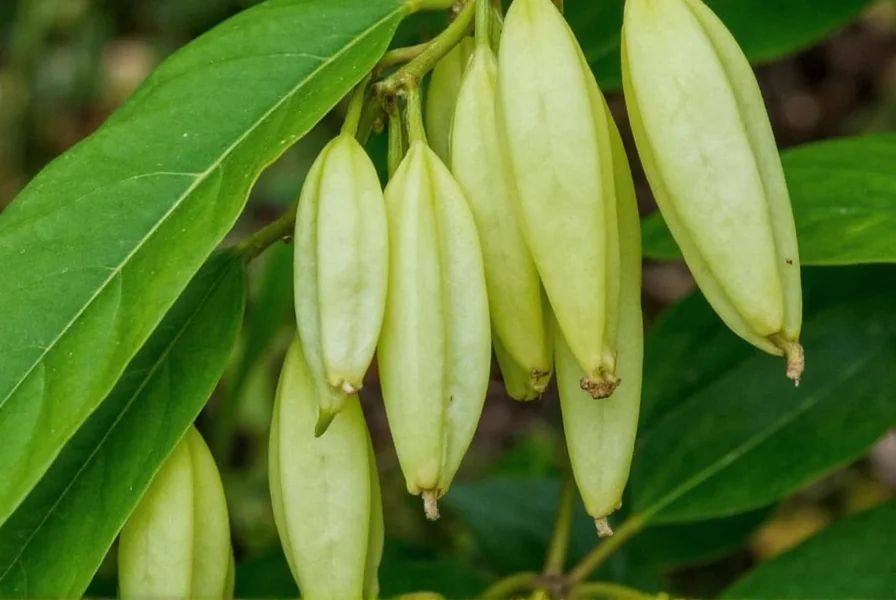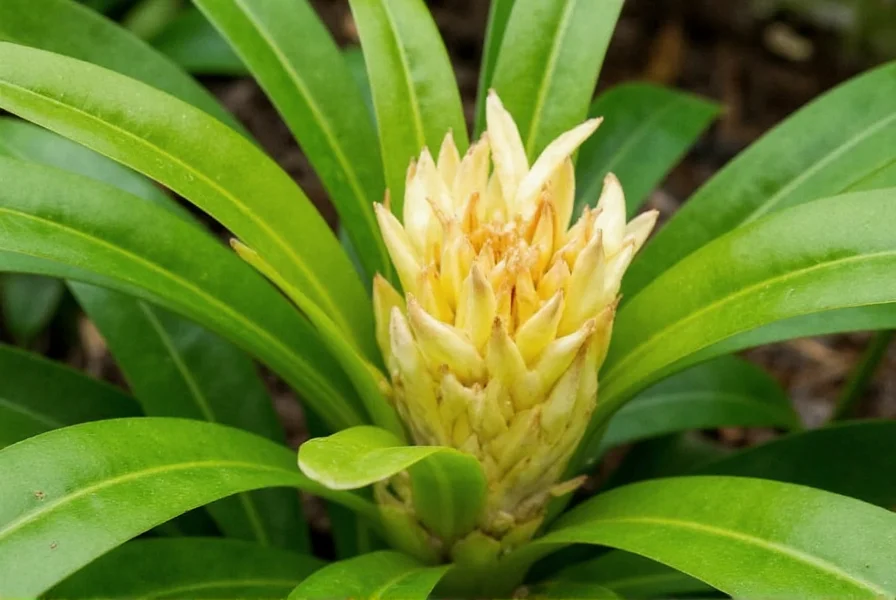Shell ginger (Alpinia zerumbet) is a tropical ornamental plant native to East Asia, known for its striking spiral-shaped flowers that resemble seashells, lush foliage, and pleasant citrus-like fragrance. Unlike culinary ginger, shell ginger is primarily grown for decorative purposes in warm climates, reaching 6-12 feet tall with proper care. It thrives in partial shade, requires consistently moist well-draining soil, and cannot survive freezing temperatures.
For gardeners seeking an exotic yet manageable tropical specimen, shell ginger offers both visual drama and aromatic appeal. This comprehensive guide explores everything you need to know about cultivating Alpinia zerumbet successfully in your garden or containers.
Understanding Shell Ginger: Botanical Profile
Scientifically classified as Alpinia zerumbet, shell ginger belongs to the Zingiberaceae family, sharing lineage with culinary ginger (Zingiber officinale) but serving different purposes. The plant's most distinctive feature is its pendulous flowers—pinkish-white blossoms arranged in a spiral pattern that genuinely resembles miniature seashells, hence the common name. Each flower cluster emerges from a pink bract, creating a striking visual contrast against the plant's long, glossy leaves that can reach 18-24 inches in length.
Native to regions including China, Japan, and Korea, shell ginger has adapted to humid subtropical environments. While it produces rhizomes like its culinary cousin, these contain minimal zingiberene (the compound that gives regular ginger its characteristic flavor), making them unsuitable for cooking but perfect for ornamental use. Understanding shell ginger plant characteristics helps gardeners appreciate why this species has become popular in tropical and subtropical landscapes worldwide.
| Characteristic | Description |
|---|---|
| Botanical Name | Alpinia zerumbet |
| Common Names | Shell ginger, pink porcelain lily, shellflower ginger |
| Mature Height | 6-12 feet (1.8-3.7 meters) |
| Flowering Season | Late spring through summer |
| Hardiness Zones | 8-11 (USDA); requires protection below 50°F/10°C) |
| Light Requirements | Partial shade to filtered sunlight |
Optimal Growing Conditions for Shell Ginger
Creating the right environment is crucial when learning how to grow shell ginger plant successfully. Unlike many tropical plants that demand full sun, shell ginger performs best in partial shade—particularly with morning sun and afternoon shade. Direct afternoon sun in hot climates can scorch its delicate leaves, while too much shade reduces flowering.
The ideal soil for shell ginger is rich in organic matter with excellent drainage. While the plant appreciates consistent moisture, waterlogged conditions quickly lead to rhizome rot. A pH between 5.5 and 6.5 mimics its natural forest floor habitat. Gardeners in cooler zones (7 and below) can successfully grow shell ginger in containers, allowing them to move plants indoors when temperatures drop below 50°F (10°C).
One of the most frequently asked questions is "does shell ginger come back every year?" In zones 8-11, it behaves as a perennial, dying back during mild winters and returning vigorously in spring. In colder climates, treat it as a seasonal container plant or provide substantial winter protection with mulch.
Planting and Propagation Techniques
Successful establishment begins with proper planting technique. When planting shell ginger rhizomes, position them just below the soil surface with the growing tips facing upward. Space plants 3-4 feet apart to allow for their substantial spread. The best time for planting is spring after the last frost when soil temperatures reach at least 60°F (15°C).
For those wondering "can you grow shell ginger from seed?", the answer is technically yes but impractical. Most gardeners propagate shell ginger through division—a straightforward process performed during spring:
- Dig up established clumps carefully to avoid damaging rhizomes
- Divide the rhizome mass into sections with at least 2-3 growing eyes each
- Allow cut surfaces to dry for 24 hours to prevent rot
- Plant divisions immediately in prepared soil
- Water thoroughly and maintain consistent moisture
Understanding shell ginger plant propagation methods ensures you can expand your collection or share with fellow gardeners. Container growers should repot every 2-3 years when rhizomes fill the pot, selecting containers at least 2 inches wider in diameter.
Care and Maintenance Requirements
Proper care transforms shell ginger from a struggling specimen to a garden showpiece. During the growing season (spring through fall), maintain consistent soil moisture—never allowing the soil to completely dry out. Reduce watering in winter when growth slows. In regions with low humidity, occasional misting prevents leaf tip burn.
Fertilization plays a key role in shell ginger plant care requirements. Apply a balanced, slow-release fertilizer (10-10-10) in early spring, followed by monthly applications of liquid fertilizer during active growth. Organic options like compost tea or fish emulsion work well for gardeners preferring natural approaches.
Pruning needs are minimal—simply remove yellowed or damaged leaves at the base. After flowering, you may cut spent flower stalks to encourage additional blooms. In colder zones, cut back foliage after the first frost and apply a thick mulch layer to protect rhizomes through winter.
Common Challenges and Solutions
While generally trouble-free, shell ginger occasionally faces these issues:
- Leaf yellowing: Usually indicates overwatering or poor drainage. Adjust watering schedule and improve soil aeration.
- Leaf scorch: Caused by too much direct sun. Relocate to a shadier spot or provide afternoon shade.
- Spider mites: Common in dry indoor conditions. Treat with insecticidal soap or neem oil.
- Rhizome rot: Results from waterlogged soil. Reduce watering and improve drainage immediately.
One frequently misunderstood aspect is "is shell ginger edible?" While not toxic, shell ginger lacks the culinary properties of Zingiber officinale. Its rhizomes contain minimal flavor compounds and are primarily ornamental. Some traditional medicine systems use it medicinally, but culinary applications are limited compared to common ginger.

Design Applications and Companion Planting
Shell ginger's architectural form makes it invaluable in landscape design. Use it as a dramatic backdrop for smaller tropicals, along water features where its moisture needs are naturally met, or as a striking container specimen for patios. Its height and dense foliage create excellent privacy screens in subtropical gardens.
For successful companion planting, pair shell ginger with:
- Cast iron plant (Aspidistra elatior) for contrasting foliage textures
- Peace lilies (Spathiphyllum) for complementary white blooms
- Ferns like macho fern for layered tropical effect
- Colocasia (elephant ears) for bold leaf contrast
Understanding best conditions for shell ginger in your specific garden microclimate ensures optimal performance. In cooler zones, grow it in containers that can be moved to protected locations during cold snaps, taking advantage of its versatility as a seasonal tropical accent.
Shell Ginger vs. Common Ginger: Key Differences
Many gardeners confuse shell ginger with culinary ginger. While both belong to the Zingiberaceae family, they serve different purposes:
- Shell ginger (Alpinia zerumbet): Ornamental focus, showy spiral flowers, minimal culinary value, larger leaves, more cold-tolerant
- Common ginger (Zingiber officinale): Culinary focus, less showy flowers, edible rhizomes, smaller leaves, less cold-tolerant
When considering shell ginger plant vs common ginger, remember that shell ginger's value lies in its visual appeal rather than kitchen utility. Its flowers attract hummingbirds and butterflies, adding ecological value to gardens beyond mere aesthetics.
Frequently Asked Questions
Is shell ginger winter hardy?
Shell ginger survives winters in USDA zones 8-11, where temperatures rarely drop below 20°F (-7°C). In zone 8, it typically dies back during winter but returns in spring. Below zone 8, treat it as a container plant that must be brought indoors before first frost, as prolonged exposure to temperatures below 50°F (10°C) causes damage.
How fast does shell ginger grow?
Shell ginger exhibits moderate to fast growth under ideal conditions, typically reaching 3-5 feet in its first year and achieving full height (6-12 feet) within 2-3 years. Growth accelerates in warm, humid conditions with consistent moisture and partial shade. Container-grown specimens may grow slightly slower due to restricted root space.
Does shell ginger spread aggressively?
Unlike some ginger varieties, shell ginger spreads moderately through rhizomes but isn't considered invasive. It forms clumps that gradually expand outward at about 6-12 inches per year. To control spread, install root barriers or divide plants every 2-3 years. In containers, growth remains naturally contained.
Can shell ginger grow in full sun?
Shell ginger prefers partial shade, particularly in hot climates. While it tolerates morning sun, intense afternoon sun typically causes leaf scorch and reduced flowering. In cooler northern zones (7 and below), it may handle more sun exposure. For optimal growth and flowering, provide dappled sunlight or 4-6 hours of morning sun with afternoon shade.
How often does shell ginger bloom?
When mature and properly established, shell ginger typically blooms from late spring through summer, with peak flowering in early summer. Each plant produces multiple flower stalks bearing the distinctive shell-shaped blossoms. Blooming frequency increases with plant maturity—most specimens reach full flowering potential in their second or third growing season.











 浙公网安备
33010002000092号
浙公网安备
33010002000092号 浙B2-20120091-4
浙B2-20120091-4